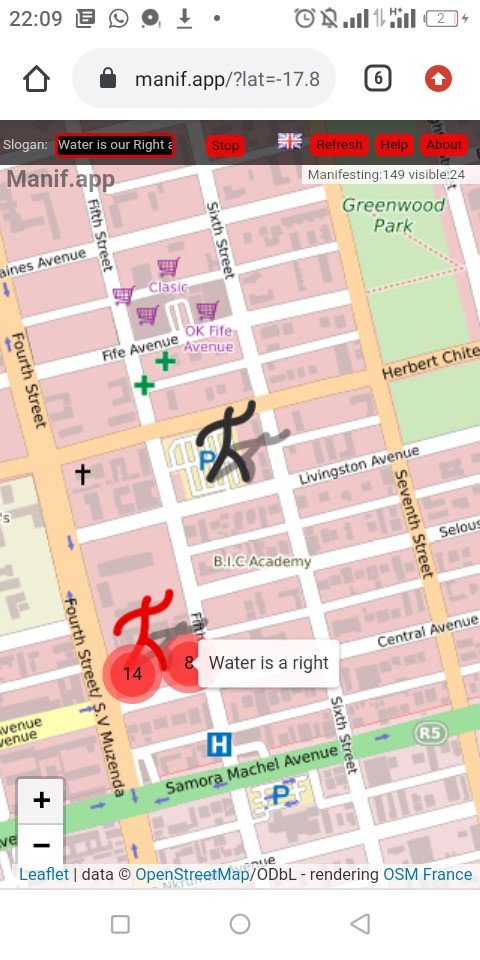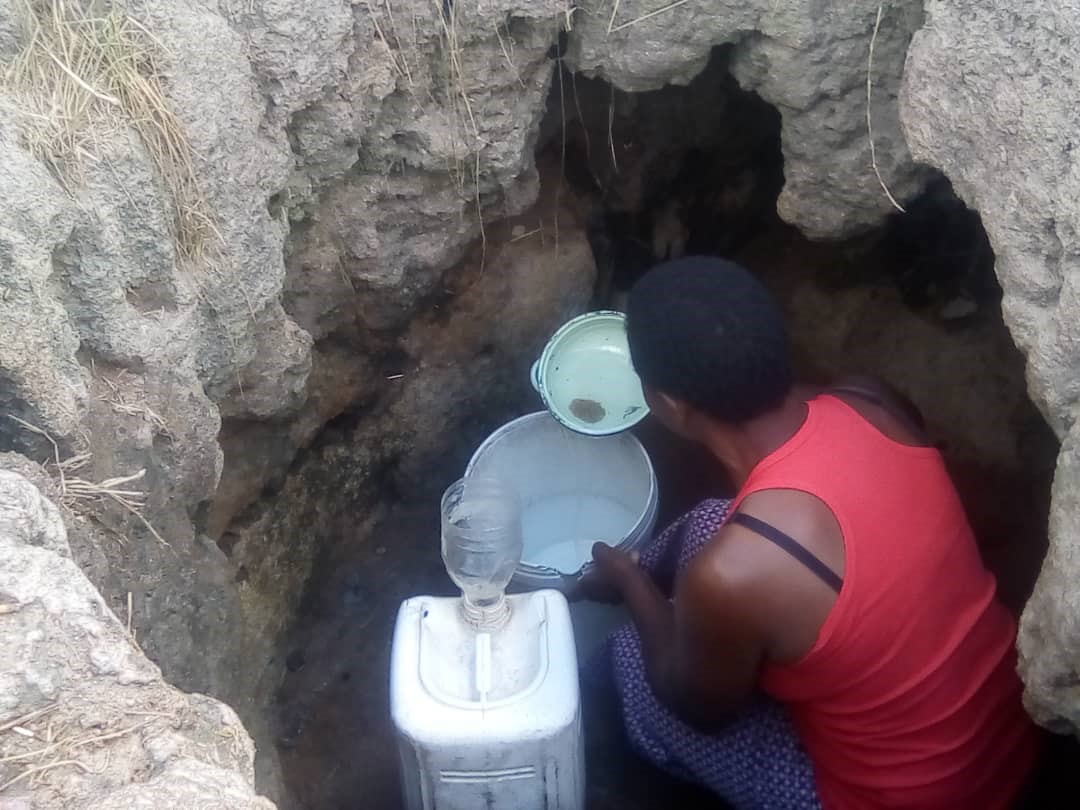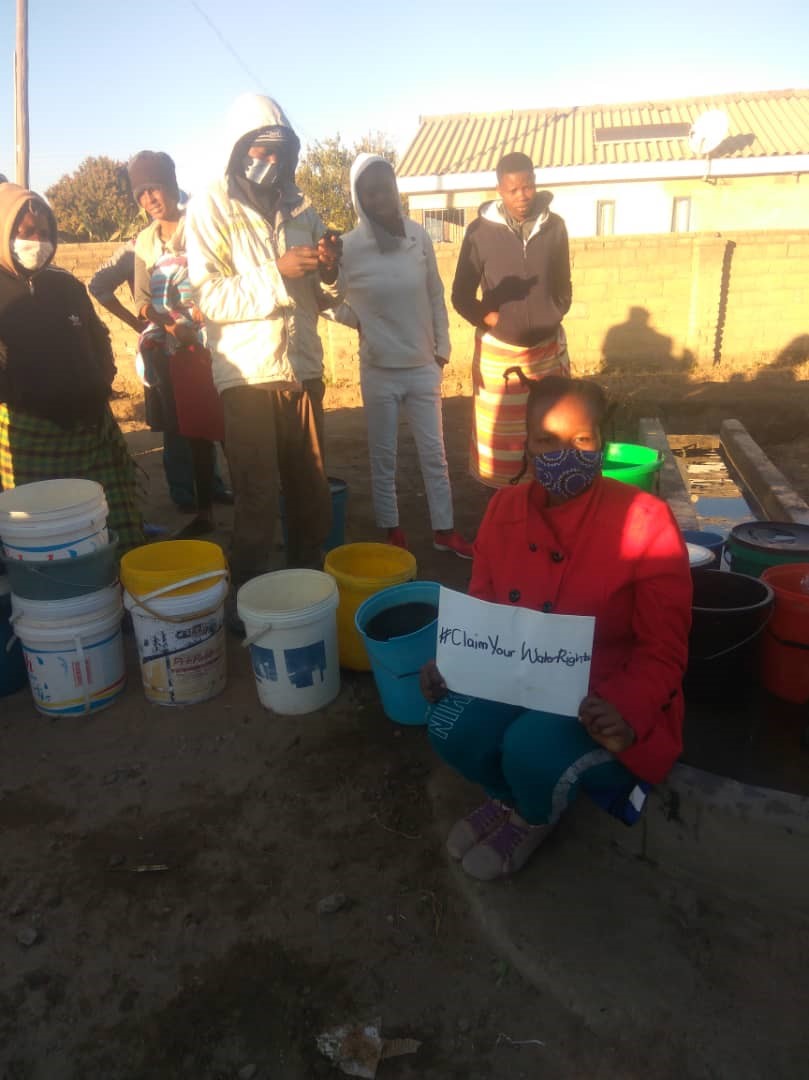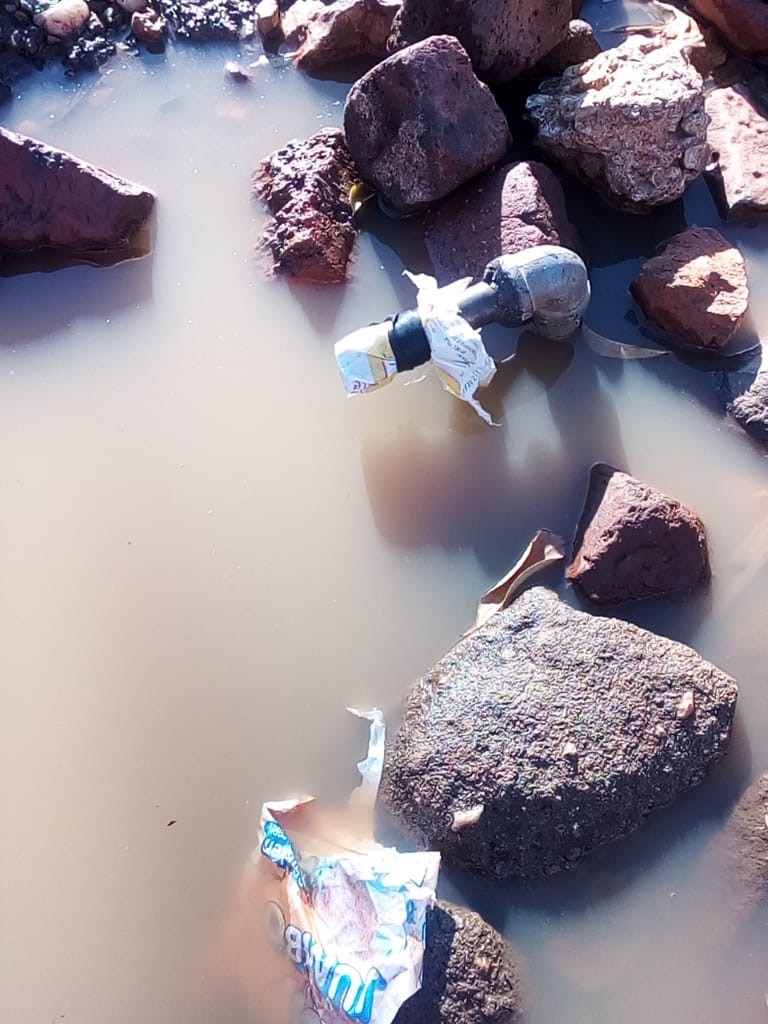On 28 July National Association of Youth Organizations (NAYO) joined activists and civil society around the world to commemorate ten years since the United Nations recognised water and sanitation as human rights. Through #ClaimYourWaterRights, a campaign aimed at mobilising people to demand their human rights to safe water and sanitation, this was a day to amplify calls for governments to urgently finance, deliver and regulate services. The global pandemic has worsened the plight of many people who have no access to water and are at a higher risk of contracting the virus.

As well as joining End Water Poverty’s virtual protests, we organised physical mobilisations with people holding #ClaimYourWaterRights placards at water points. We also received videos and pictures that expose the true scale of Zimbabwe’s water crisis from communities in five provinces: Harare (Stoneridge), Mashonaland East (Chitungwiza), Mashonaland West (Kadoma), Masvingo (Mwenenzi RDC) and Matabeleland North (Hwange District).

Despite Section 77 (a) of Zimbabwe’s Constitution stating that “every person has the right to safe, clean and portable water”, Harare has been experiencing water challenges for a very long time. The City of Harare has attributed the poor water supply to shortages of water treatment chemicals. The water production has shrunk below 150 megalitres per day against the demand of 1,200 megalitres per day.
An urgent application was lodged to the Zimbabwean High Court in March, which compelled the Ministry of Local Government, Ministry of Health and the Ministry of Finance to take reasonable steps to ensure the realisation of the right to water during the lockdown period. Despite the High Court ordering the government to release funds for water provision in March to avoid a serious humanitarian catastrophe, most communities are still forced to get water from unsafe water sources.

The water crisis in Chitungwiza is worsened by residents not having their own source of water, instead relying on the City of Harare, which is failing to provide the service to its own citizens. Chitungwiza depends on council-donor drilled boreholes. A recent article in the Herald newspaper points out that public water points have become potential hotspots for contracting coronavirus. The government must comply with the High Court Order by expediting funds to ensure more water bowsers are in place and more boreholes are drilled. The central government must invest in water infrastructure by constructing dams, such as Kunzvi and Musami, and fixing water distribution. This is critical to providing long term solutions to the water crisis.
The council has not been sincere in providing gender responsive services that cater for women and girls, who often carry the burden of finding water. A woman in Stoneridge told us: “Accessing water in my community is a mammoth task. We are harassed, abused and at times raped at water points as women but we have no choice – our families will not survive without water.” Meanwhile, Tsitsi from Chitungwiza said: “As a young woman, I feel the burden of lack of water more than others in my community, especially with our taps going without water for weeks. I wake up in the early hours, queue for hours to collect water at a borehole only to get home and do chores. As soon as the water runs out at home, I have to queue again. I have no social life”.
Many communities in Mashonaland West have not received tap water for 20 years, forcing residents to use unsafe water sources. The main challenge in Kadoma is debilitated water infrastructure that has not been upgraded for years.

Similarly, a resident in Madvingo asked us: “What is the right to water? We do not have water here. Our taps have been dry for months.” In a submission from Mwenenzi RDC, citizens urged the Zimbabwe Water Authority (ZINWA) to improve the water supply in the area. Although during this lockdown period they have improved their water rationing, citizens are still only receiving water three days per week. A call for local authorities to improve the water supply needs to be intensified especially during this period of COVID as it will go a long way to ensuring household hygiene.
We received a video from Hwange District in Matabeleland North Province, where people expressed concern over strict water rationing. Citizens are receiving water supplies two days per week. In April 2020, the High Court dismissed an application by the Hwange residents who were suing ZINWA, Hwange Colliery Company Limited and four Cabinet Minister over a tight water rationing scheme. The judge ruled that “the case is not urgent because residents knew about the water woes as far back as 2017 and they didn’t take any action. No basis has been made at all for urgency in this case, and I accordingly decline to hear this matter on the basis of urgency and should therefore be dealt with as an ordinary case”. Citizens fear that the affected suburbs might become a breeding ground for COVID-19 and other waterborne diseases as people fail to maintain high standards of hygiene.